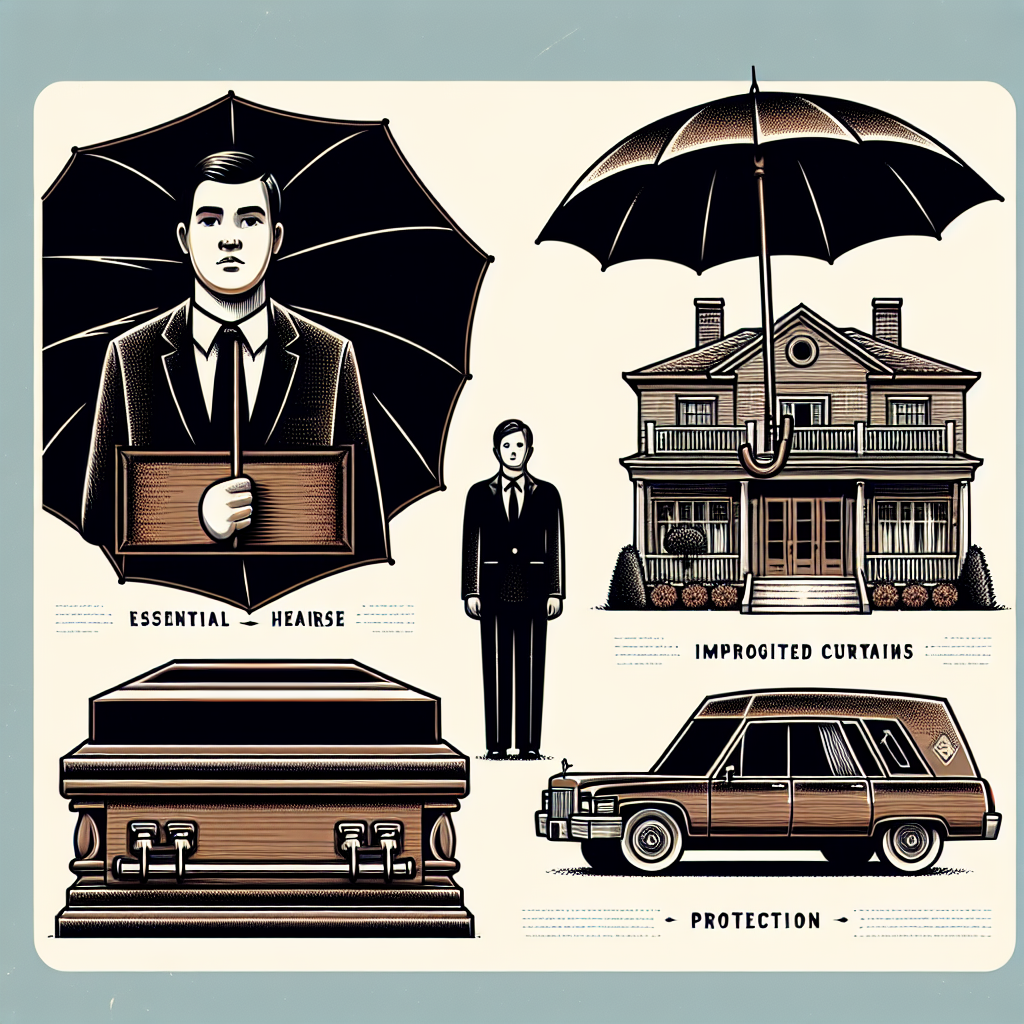Filed under Home Insurance on
Rental Home Insurance Coverage: What You Need to Know

If you own a property you rent to others—or you’re thinking about turning your home into an investment—understanding rental home insurance coverage can be the difference between a predictable business plan and an expensive surprise. The right policy protects the building, your income, and your liability exposure. The wrong fit can leave costly gaps. This guide breaks down what’s covered, what’s not, how to pick limits, and the smart add-ons that landlords increasingly rely on.
What is rental home insurance?
Rental home insurance (often called landlord insurance or a dwelling policy) is designed for properties you lease to others, whether it’s a single-family house, a duplex, or a small multi-unit building. It differs materially from standard homeowners insurance, which assumes you live in the property. Use the wrong policy type and a claim could be partially paid—or denied—because the occupancy is misclassified.
Insurers commonly issue rental policies on “Dwelling Fire” forms: DP-1, DP-2, and DP-3. While terminology varies by carrier, these forms generally step up in breadth, with DP-3 typically offering the most robust protection for long-term rentals.
Landlord insurance vs. renters insurance
- Landlord insurance protects the building, attached structures, certain landlord-owned contents used to maintain the property, loss of rental income from covered damage, and liability stemming from ownership.
- Renters insurance protects the tenant’s belongings and their liability. Smart landlords require tenants to carry renters insurance to reduce disputes and help keep claims clean.
Core pieces of rental home insurance coverage
Most landlord policies include several cornerstone coverages. While names and sublimits differ across carriers, the structure below is common.
1) Dwelling (Coverage A)
This is the backbone of the policy. It pays to repair or rebuild the structure when a covered peril damages it. Fire, wind, and hail are typically included; flood and earthquake are not unless you add separate policies. DP-3 forms often cover the dwelling on an “open perils” basis (unless excluded), while DP-1 and DP-2 may be “named perils,” which cover only what’s listed. The difference matters when a claim hits a gray area.
2) Other Structures (Coverage B)
Detached garages, fences, and sheds typically fall here, often set at 10% of the dwelling limit by default, with the option to increase. If you’ve converted a detached structure into a rentable studio or office, disclose this; use can affect how it’s rated and covered.
3) Personal Property (Landlord-Owned)
Landlord policies usually cover personal property you own that’s used to service the rental—think appliances, lawn equipment you keep on-site, or a stackable washer-dryer you provide. Keep an inventory with photos and serial numbers. If you furnish the unit, talk with your agent about higher limits and replacement cost valuation.
4) Loss of Rental Income (Fair Rental Value)
If a covered event makes the home uninhabitable, this coverage replaces the rent you would have collected during repairs, subject to policy limits and time frames. Many policies default to 12 months. In markets where labor and materials run hot, 18–24 months may be more realistic. This is a core piece of rental home insurance coverage that investors underestimate—especially in areas with permitting backlogs.
5) Liability
Liability coverage responds if someone alleges bodily injury or property damage due to your premises or your negligence as a landlord. Typical limits start at $300,000 or $500,000, but many investors step up to $1 million and pair it with a personal or commercial umbrella policy. Staircase injuries, deck failures, and slip-and-falls are common claim drivers.
6) Medical Payments to Others
A no-fault coverage designed for minor injuries on your property. It’s not a substitute for liability but can resolve small incidents quickly.
Popular endorsements and add-ons
Every property is different. Consider these enhancements to tailor your protection.
- Water Backup and Sump Overflow: Covers damage from backed-up sewers or drains. Standard policies often exclude this—essential for older homes or properties with finished basements.
- Ordinance or Law: Covers the added cost to bring repaired areas up to current building codes. Useful for properties older than 20 years.
- Equipment Breakdown: Helps with sudden mechanical or electrical failure of systems like HVAC, boilers, or major appliances you provide.
- Service Line Coverage: Pays for repair or replacement of underground pipes and wiring you’re responsible for, such as the water line from the street.
- Vandalism and Malicious Mischief: Sometimes excluded on basic forms; confirm inclusion if you own properties in urban centers or during periods of vacancy.
- Theft of Landlord Property: Coverage for stolen appliances or fixtures may require an endorsement.
- Flood or Earthquake: Usually separate policies. If your rental is in a flood zone or seismically active region, these can be mission-critical.
- Extended Replacement Cost: A percentage cushion above your dwelling limit to hedge against sudden spikes in construction costs.
Short-term rentals and homesharing
Listing on platforms like Airbnb or Vrbo changes your risk profile. Many standard landlord policies are built for long-term tenants on fixed leases. Short-term rentals may be considered a business exposure, triggering different underwriting and coverage terms. Look for a specific home-sharing endorsement or a policy designed for short-term rentals that includes guest-caused damage, loss of income from canceled bookings due to covered damage, and commercial-grade liability. Without proper treatment, you could face coverage disputes at claim time.
Actual cash value vs. replacement cost
How your insurer values losses matters as much as the limits you choose.
- Replacement Cost (RC): Pays the cost to repair or replace with materials of like kind and quality, without deducting for depreciation. You typically must complete repairs to receive full RC.
- Actual Cash Value (ACV): Replacement cost minus depreciation. Older roofs, aging HVAC systems, and worn finishes depreciate substantially under ACV. Consider RC for the dwelling and landlord-owned contents if budget allows.
Common exclusions to watch
No policy covers everything. Read your exclusions and plan around them.
- Flood and Earth Movement: Typically excluded; purchase separate policies if needed.
- Wear and Tear, Maintenance Issues: Insurance covers sudden and accidental losses, not deferred upkeep.
- Mold and Rot: Often limited or excluded unless resulting from a covered loss and discovered within a tight window.
- Sewer/Drain Backup: Usually requires an endorsement.
- Pest and Animal Damage: Termites, rodents, and vermin are maintenance issues.
- Vacancy Restrictions: Coverage for vandalism, water damage, or glass breakage may be limited if the home is vacant beyond a specified period (often 30–60 days). Disclose vacancies to your agent.
How much coverage do you need?
Getting limits right is both art and science. Start with a reconstruction cost estimator from your insurer, which considers local labor rates, materials, and design features. Don’t anchor to market value; it includes land and can swing with interest rates. Consider:
- Dwelling Limit: Aim for full replacement cost, not a guess based on purchase price.
- Other Structures: Increase if you have significant outbuildings or rental use in detached spaces.
- Landlord Contents: Add up appliance packages, tools, and any furnishings you provide.
- Loss of Rent: Choose a time limit that matches realistic repair timelines in your area. After major catastrophes, 12 months may be too short.
- Liability: Many landlords target at least $1 million combined (base policy plus umbrella). If you own multiple rentals or have significant assets, consider higher limits.
In short, a tailored plan for rental home insurance coverage should reflect rebuild costs, cash flow needs, and lawsuit exposure—not just premium price.
What affects your premium?
Insurers weigh many variables when pricing a rental. Expect the following to matter:
- Location: Wildfire zones, coastal wind exposures, and crime rates influence cost and availability.
- Construction and Updates: Roof age, electrical systems, plumbing type, and heating fuel are heavily weighted. Upgrades reduce risk and premium.
- Occupancy Type: Long-term tenants are rated differently than short-term guests. Student housing or high turnover can increase risk.
- Claims History: Prior losses impact eligibility and pricing for 3–5 years.
- Protective Devices: Central fire/burglar alarms, water shutoff valves, and monitored sensors can earn credits.
- Deductible: Higher deductibles reduce premium but increase out-of-pocket costs at claim time.
Trends shaping landlord insurance
Several industry currents are reshaping how carriers price and design rental policies:
- Reconstruction Inflation: Volatile materials and labor costs make extended replacement cost more valuable.
- Weather Volatility: More severe wind, hail, and wildfire seasons are prompting higher deductibles and stricter underwriting in certain regions.
- Water Damage Frequency: Non-weather water losses are a major driver of claims severity, fueling interest in water sensors and automatic shutoff valves.
- Regulatory Shifts: Some municipalities are tightening short-term rental rules and inspection standards; policies must align with permitted uses.
- Liability Awareness: Courts and juries are scrutinizing premises safety; landlords with proactive maintenance and documentation tend to fare better.
Organizations such as the Insurance Information Institute and the National Association of Insurance Commissioners regularly publish data on claim trends and coverage considerations. While you don’t need to memorize statistics, knowing the direction of travel helps you buy coverage that keeps pace with risk.
Claim scenario: a quick walkthrough
Imagine a kitchen fire damages cabinets and smoke infiltrates the entire unit. The tenant moves out during repairs.
- You file a claim and share photos, the fire report, and a list of damaged landlord-owned items.
- The adjuster estimates repair costs. If you have replacement cost, initial payment may be on an ACV basis, with depreciation reimbursed after repairs are completed.
- Loss of rent kicks in for the time the unit is uninhabitable due to covered damage, up to the policy’s time limit.
- You pay your deductible once per occurrence, not per coverage type.
Documentation shortens the process. Keep leases, rent rolls, a digital inventory of appliances, warranties, and receipts. Cloud storage pays dividends on bad days.
Risk management that pays for itself
Insurance is only one side of the coin. Preventing losses protects your bottom line and keeps premiums stable.
- Fire Safety: Hardwired smoke alarms, CO detectors, range hood suppression in high-use kitchens, and fire extinguishers on every floor.
- Water Defense: Smart leak sensors under sinks and near water heaters, braided steel supply lines, and automatic shutoff valves.
- Electrical Checks: GFCI outlets in kitchens and baths, updated panels, and professional inspections after tenant turnovers in older properties.
- Premises Liability: Sturdy handrails, adequate lighting, even walking surfaces, and regular snow/ice removal plans.
- Tenant Screening: Background and credit checks, verifiable income, and clear house rules reduce risk of negligent damage and liability claims.
- Maintenance Calendar: Seasonal roof checks, gutter cleaning, and HVAC service logs demonstrate diligence if a claim is disputed.
Short-term vs. long-term rental considerations
Mixing use types demands clarity. Some landlords try occasional short-term hosting on a long-term rental policy. That can be a coverage trap. Many carriers require a specific endorsement or a policy designed for short-stays if average bookings are under 30 days. Features to look for include guest-caused damage, host liability for guest injuries, income protection for canceled bookings due to covered damage, and coverage for theft or vandalism tied to guest stays. If you co-host or use a property manager, ensure they’re named appropriately and carry their own coverage.
Working with property managers and vendors
Require property managers to show proof of professional liability and general liability insurance, and ask to be named as an additional insured where appropriate. For vendors, collect certificates of insurance before work starts. This helps route claims to the right policy and keeps your loss history clean.
The cost of getting it wrong
Placing a tenant in a home insured as owner-occupied can jeopardize coverage for fire, water damage, or liability claims. Likewise, leaving a unit vacant for extended periods without notifying your carrier can trigger exclusions. If you’re “house hacking” (living in one unit of a multi-family while renting others), make sure the policy matches the true occupancy and use. Accuracy upfront beats argument later.
Checklist for buying rental coverage
- Confirm the correct policy type (landlord vs. homeowner) and occupancy (long-term vs. short-term).
- Choose a dwelling limit based on a rebuild cost estimator, not market value.
- Add loss of rental income with a realistic time frame for repairs.
- Set liability at $500,000 or higher and consider an umbrella.
- Add key endorsements: water backup, ordinance or law, equipment breakdown, service line as needed.
- Pick replacement cost valuation where budget allows.
- Disclose updates, protective devices, and any vacancies for accurate pricing.
- Verify manager/vendor insurance and require tenant renters insurance.
Ways to save without creating coverage gaps
- Bundle Policies: Combine landlord, auto, umbrella, and other policies with one carrier for multi-policy discounts.
- Raise Deductibles Thoughtfully: Balance cash reserves with premium savings. Many landlords choose $1,000–$5,000 deductibles.
- Upgrade Systems: New roofs, modern electrical panels, and leak prevention tech often generate credits and fewer losses.
- Choose Stable Tenants: Longer lease terms and lower turnover tend to reduce claims.
- Proactive Inspections: Annual or semiannual walkthroughs can spot leaks, loose railings, or other hazards early.
Frequently asked questions
Is rental home insurance required?
Lenders and many HOAs require appropriate coverage for financed or community-governed properties. Even if you own the property outright, going without insurance exposes you to catastrophic loss and liability. Many municipalities also require minimum liability limits for operating short-term rentals.
Does landlord insurance cover tenant belongings?
No. Tenants need renters insurance for their personal property and liability. Make this a lease requirement and keep proof on file.
What if I live in one unit and rent the rest?
That scenario may call for a hybrid policy or a specific endorsement. Be transparent about your living arrangements, number of units, and tenant types so your agent can place you with the right carrier.
Are pets covered under liability?
Some policies exclude or limit liability for certain dog breeds or animals. If your tenant has a restricted breed, your policy could exclude related claims. Address pets explicitly in your lease and confirm coverage with your agent.
Will my policy replace lost rent if a tenant simply stops paying?
Generally no. Loss of rent coverage is triggered by physical damage from a covered peril that makes the unit uninhabitable. Nonpayment is a contractual issue, not an insurable event, though specialized rent default products exist in some markets.
How to compare quotes intelligently
Price matters, but coverage definitions matter more. When you compare, normalize the quotes:
- Match dwelling limits and valuation (RC vs. ACV).
- Align loss of rent time frames and triggers.
- Confirm named vs. open perils and any wind/hail or wildfire restrictions.
- Check sublimits (appliances, ordinance or law, theft, water backup).
- Verify vacancy clauses and short-term rental allowances if applicable.
Ask for a side-by-side coverage summary. A slightly higher premium for broader terms often saves multiples at claim time.
Documentation that strengthens your position
Insurers and courts value records. Establish a simple but consistent system:
- Keep lease agreements, inspection reports, and maintenance logs.
- Photograph each room at move-in and move-out.
- Inventory landlord-owned appliances and tools with receipts.
- Save permits and contractor invoices for upgrades.
- Store digitally with backups so you can access them quickly during a claim.
The right coverage for growing portfolios
As you add properties, consider portfolio solutions. Some carriers offer “blanket” limits across multiple locations, a single renewal date, and centralized billing. An umbrella policy can sit over your rental liability and auto exposures. Review your structure with a qualified insurance professional and, if you hold property in LLCs, a business attorney to align coverage with your legal framework.
Key takeaways
- Match policy type to property use. A rental needs landlord coverage, not a homeowner policy.
- Prioritize loss of rent, liability, and water-related endorsements.
- Choose replacement cost when feasible; ACV can erode payouts for older features.
- Short-term rentals require specific treatment—don’t assume you’re covered.
- Safety upgrades and documentation reduce claims and smooth the process when losses occur.
Putting it all together
Real estate is a numbers game, and insurance is one of the few levers that can both stabilize cash flow and guard against outsized downside. Start with a clear-eyed assessment of rebuild costs, rental income dependency, and premises liability. Then build a package that addresses the most likely losses in your geography. The best rental home insurance coverage balances robust protection with pragmatic risk controls, so you can focus on occupancy, maintenance, and long-term returns.
Final word and next steps
Before your next lease cycle or property acquisition, schedule a coverage review. Bring your current policy, a recent inspection report, details on any upgrades, and your rent roll. Ask how your policy handles water backup, code upgrades, and extended loss of rent. Clarify vacancy provisions and short-stay rules. With the right rental home insurance coverage in place, you’ll be better equipped to navigate market swings and the unexpected bumps that come with being a landlord.
This article offers general information. For advice tailored to your property and jurisdiction, consult a licensed insurance professional and reference reputable resources such as the Insurance Information Institute, the National Association of Insurance Commissioners, and FEMA for hazard-specific guidance.





